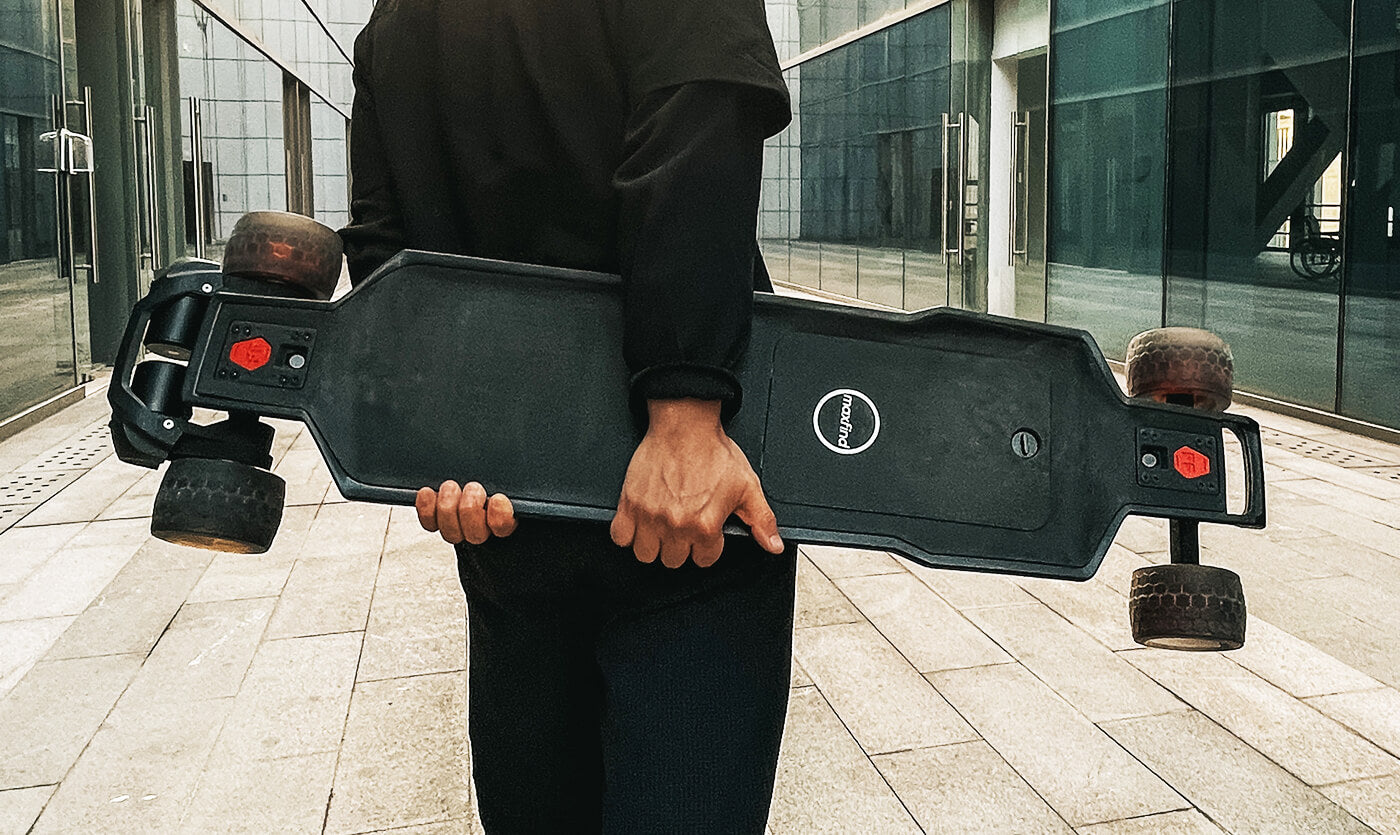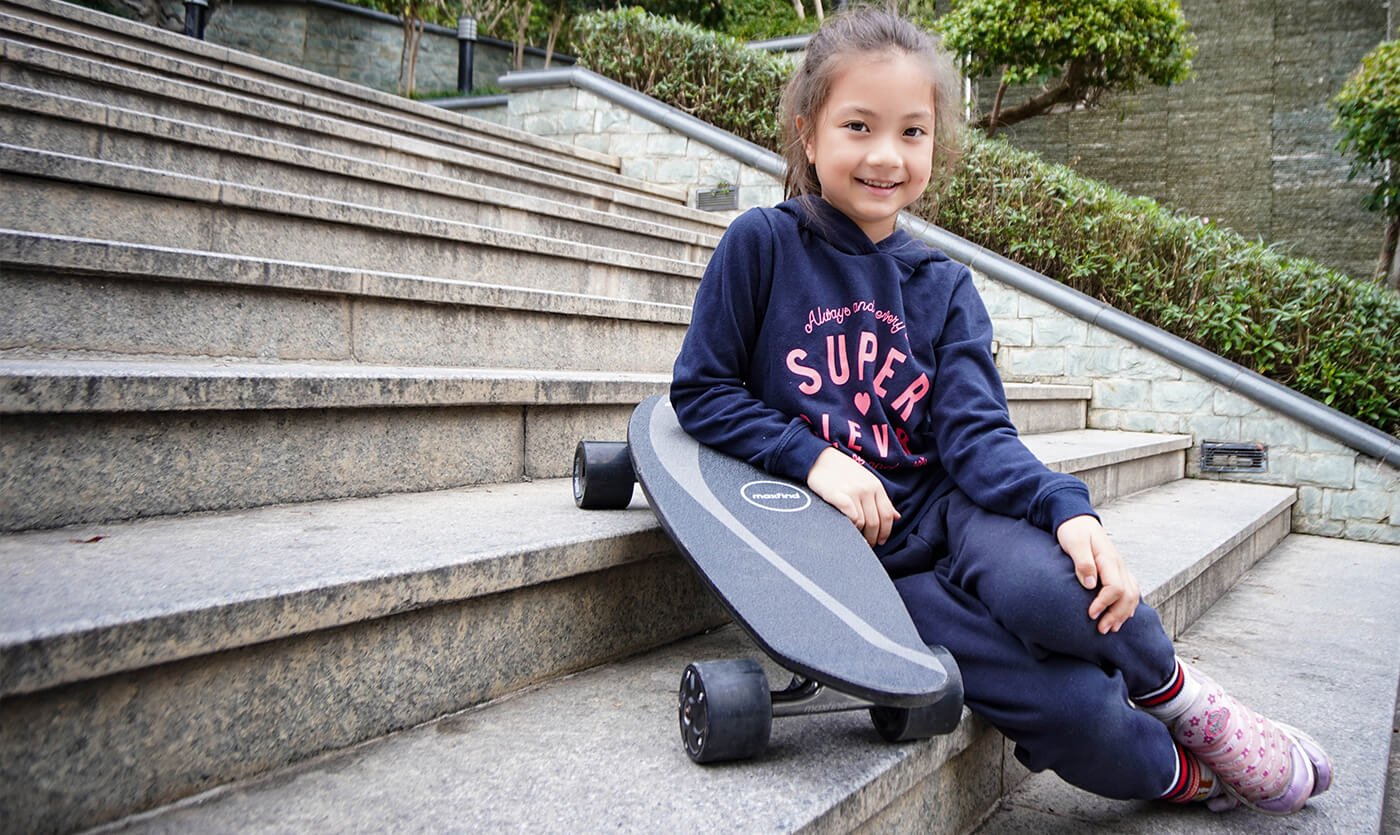A 2-in-1 electric skateboard gives you the freedom to ride on both city streets and rougher off-road paths without needing two separate boards. By swapping out a few key components, you can transform the board from smooth and sleek to rugged and ready for dirt trails. In this guide, we'll break down what makes a board 2-in-1, how it stacks up against regular electric skateboards, and what to expect before buying one.

What Does 2-in-1 Really Mean?
A 2-in-1 electric skateboard is designed to switch between two riding modes: street and all-terrain. This typically means you can swap between smaller, smoother street wheels and larger, grippier all-terrain (AT) wheels. Most 2-in-1 setups also come with the required pulleys, belts, and wheel gears to make the transition possible.
Changing between modes usually takes 10 to 30 minutes, depending on your tools and experience. Most boards require an Allen key or skate tool to loosen the trucks, remove the wheels, and fit the new components. It’s not hard, but it does require a little patience and some basic mechanical confidence.
What it doesn’t mean: you're not getting a board that magically adapts to every terrain instantly. You still need to switch parts, and each mode has its trade-offs.

2-in-1 vs Regular Electric Skateboards
Compared to standard electric skateboards, 2-in-1 boards are more versatile. Street setups are great for smooth pavement, higher speeds, and longer range. Off-road setups let you handle dirt paths, grass, gravel, and cracked sidewalks with more control and comfort.
However, 2-in-1 boards tend to be heavier and more expensive. The added hardware needed for both modes adds bulk. In all-terrain mode, they may also have lower range and reduced top speeds due to the added weight and drag.
If you're only ever going to ride on city streets, a dedicated street board is lighter and often cheaper. But if your routes vary or you like to explore on weekends, a 2-in-1 board offers more flexibility.
|
Aspect |
2-in-1 Electric Skateboard |
Regular (Street) Electric Skateboard |
|
Versatility |
High — swap between street and all-terrain with interchangeable parts |
Low — optimized for smooth pavement only |
|
Typical Surfaces |
Pavement, dirt paths, grass, gravel, cracked sidewalks (in AT setup) |
Smooth pavement and well-maintained paths |
|
Speed |
Street mode: higher; AT mode: reduced due to added weight/rolling resistance |
Generally higher top speeds on pavement |
|
Range |
Street mode: longer; AT mode: shorter because of higher drag and load |
Longer range on pavement vs. 2-in-1 in AT mode |
|
Comfort & Control on Rough Terrain |
Better grip and shock absorption with AT wheels |
Harsher feel on rough/cracked surfaces |
|
Weight |
Heavier (extra hardware for both modes) |
Lighter and easier to carry |
|
Price |
Generally more expensive |
Often cheaper |
|
Portability |
Less portable in AT setup; manageable in street setup |
More portable for daily city use |
Who Is It Best For?
A 2-in-1 electric skateboard is a great fit for riders who:
-
Commute through mixed surfaces (pavement, parks, trails)
-
Want one board that does it all
-
Like experimenting with gear and customizing setups
-
Live in areas with changing terrain or unpredictable routes
It may not be ideal for:
-
Beginners who want a simple, lightweight ride
-
Riders focused purely on high-speed street carving
-
People who won’t actually switch modes often

What to Expect When Using One
Performance and Range Street mode usually offers better speed and efficiency. With smaller wheels and less rolling resistance, you can expect longer range and higher top speeds.
All-terrain mode adds grip and cushioning but reduces range slightly. The motor works harder to handle uneven surfaces and larger tires, which draws more power.
Comfort and Control Off-road wheels absorb bumps and cracks better, making the ride smoother on rough paths. However, the added height may change your center of gravity, so you might need a bit of time to adjust your balance and braking technique.
Portability and Storage Expect your board to weigh more in all-terrain setup. Carrying it up stairs or loading it into a car trunk might be less convenient. If portability is a priority, street mode will be easier to manage.
Conversion in Practice Swapping between modes is pretty straightforward, but it’s not something most people do every day. Many riders tend to stick with one setup for weeks at a time, depending on the season or where they're riding most often.
How to Choose a Good 2-in-1 Electric Skateboard
Motor and Drivetrain Look for strong motors with enough torque to handle hills and heavy AT wheels. Belt-driven boards offer more flexibility for conversion than hub motors, which are harder to modify.
Wheels and Tires Quality street wheels should be smooth and durable, while AT wheels should be pneumatic or large rubber with good tread. Make sure the board includes proper pulleys and gears for each setup.
Battery and Electronics Check the battery range in both modes. Some brands only advertise street-mode range, which can be misleading. Also, ensure the electronic speed controller (ESC) and remote offer smooth acceleration and braking in both configurations.
Weight and Build Quality The deck should be stiff enough for off-road use but comfortable for carving. Look for water resistance, strong trucks, and reliable enclosure builds.
FAQ
What makes a 2-in-1 Electric Skateboard different from an all-terrain board?
A 2-in-1 board lets you switch between AT and street setups. A true AT board may only be optimized for off-road use with no conversion option.
How much range do I lose with AT tires?
Usually 15–25%, depending on motor power, battery size, terrain, and rider weight.
Is swapping setups beginner-friendly?
Yes, with a bit of practice. Most boards include tools and tutorials.
Can I ride off-road legally in my area?
Depends on local laws. Check rules for sidewalks, bike lanes, and public trails.
What safety gear should I use for AT riding?
Helmet, wrist guards, knee pads, and possibly elbow pads. Consider a full-face helmet for trail riding.
Will a 2-in-1 be too heavy for daily commuting?
In AT mode, maybe. In street mode, most boards are still manageable but heavier than dedicated street-only boards.
Conclusion
A 2-in-1 electric skateboard gives you the best of both worlds—urban mobility during the week and off-road freedom on the weekend. It’s a smart pick for riders who value adaptability and don’t mind a little setup work in exchange for more riding possibilities. If you ride varied terrain or like to explore, a 2-in-1 board could be your ideal choice.
More Reading: Complete Guide to U.S. Electric Scooter Laws by State 2025






Share:
Can Electric Skateboards Go on Sidewalks?
Can You Convert a Regular Skateboard into an Electric Skateboard?